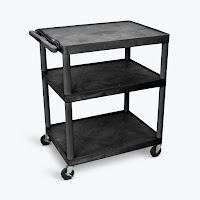Water Probes
Ever tried probing into hard, dry, or frosted soil layers? It can get pretty difficult, to say the least. Luckily, there’s a solution to this kind of problem: a water probe.
A water probe is a type of soil probe that’s specially designed to penetrate hard, dry, or frozen soil. While it’s typically used for soil sampling and locating subsurface utility lines, it can also work as a tool for cleaning meter boxes or checking drain fields.
One of the most commonly asked questions about water probes is if they’re the same as water sensors—it’s not. Water sensors can detect and measure the water level in storage tanks and other areas, whereas water probes are used to pierce through the ground with the help of water pressure in the soil’s aqueous layer.
But how does it do it? And how can you choose the right one?
This design stems from the fact that beneath unsaturated, frozen, or dry surface soil layers is an aqueous layer—the part of the soil where underground water pools.
When getting a water probe, you have to make sure that it has a shaft made of thick bend-resistant and rust-resistant steel. You also have the option to choose among various probe rod lengths: 48, 60, and 72 inches.
Valves are made to drain the water from the probe. Just loosen the valve and let the water flow from the probe.
Choose a water probe with a valve made of a rust-resistant material, like brass. Also, you have to check if the valve is located near the handle for convenient control and if it’s threaded well so that you can replace it as needed.
Water probe handles are usually built with 1-inch thick steel. These handles’ hose connectors, meanwhile, are made with brass for rust resistance.
For added safety, choose a probe with brightly colored grips. That way, you can be extra visible in low-light work settings.
A water probe is a type of soil probe that’s specially designed to penetrate hard, dry, or frozen soil. While it’s typically used for soil sampling and locating subsurface utility lines, it can also work as a tool for cleaning meter boxes or checking drain fields.
One of the most commonly asked questions about water probes is if they’re the same as water sensors—it’s not. Water sensors can detect and measure the water level in storage tanks and other areas, whereas water probes are used to pierce through the ground with the help of water pressure in the soil’s aqueous layer.
But how does it do it? And how can you choose the right one?
Shaft
Let’s start with the water probe shaft. This part of the probe is made to be hollow so that it can allow water to flow through, enabling you to drive the probe deeper into the ground.This design stems from the fact that beneath unsaturated, frozen, or dry surface soil layers is an aqueous layer—the part of the soil where underground water pools.
When getting a water probe, you have to make sure that it has a shaft made of thick bend-resistant and rust-resistant steel. You also have the option to choose among various probe rod lengths: 48, 60, and 72 inches.
Valve
Another thing that sets a water probe from other soil probes is its valve.Valves are made to drain the water from the probe. Just loosen the valve and let the water flow from the probe.
Choose a water probe with a valve made of a rust-resistant material, like brass. Also, you have to check if the valve is located near the handle for convenient control and if it’s threaded well so that you can replace it as needed.
Handle
Need to clean underground meter boxes? No problem. With a high-quality water probe, you can easily connect your water hose to the probe’s handle.Water probe handles are usually built with 1-inch thick steel. These handles’ hose connectors, meanwhile, are made with brass for rust resistance.
Grips
Water probes are often used during the colder months when the ground is covered with frost. Because of this, these probes need to have grips that are not only ergonomically designed and comfortable to hold—but also insulated against the cold.For added safety, choose a probe with brightly colored grips. That way, you can be extra visible in low-light work settings.

Comments
Post a Comment